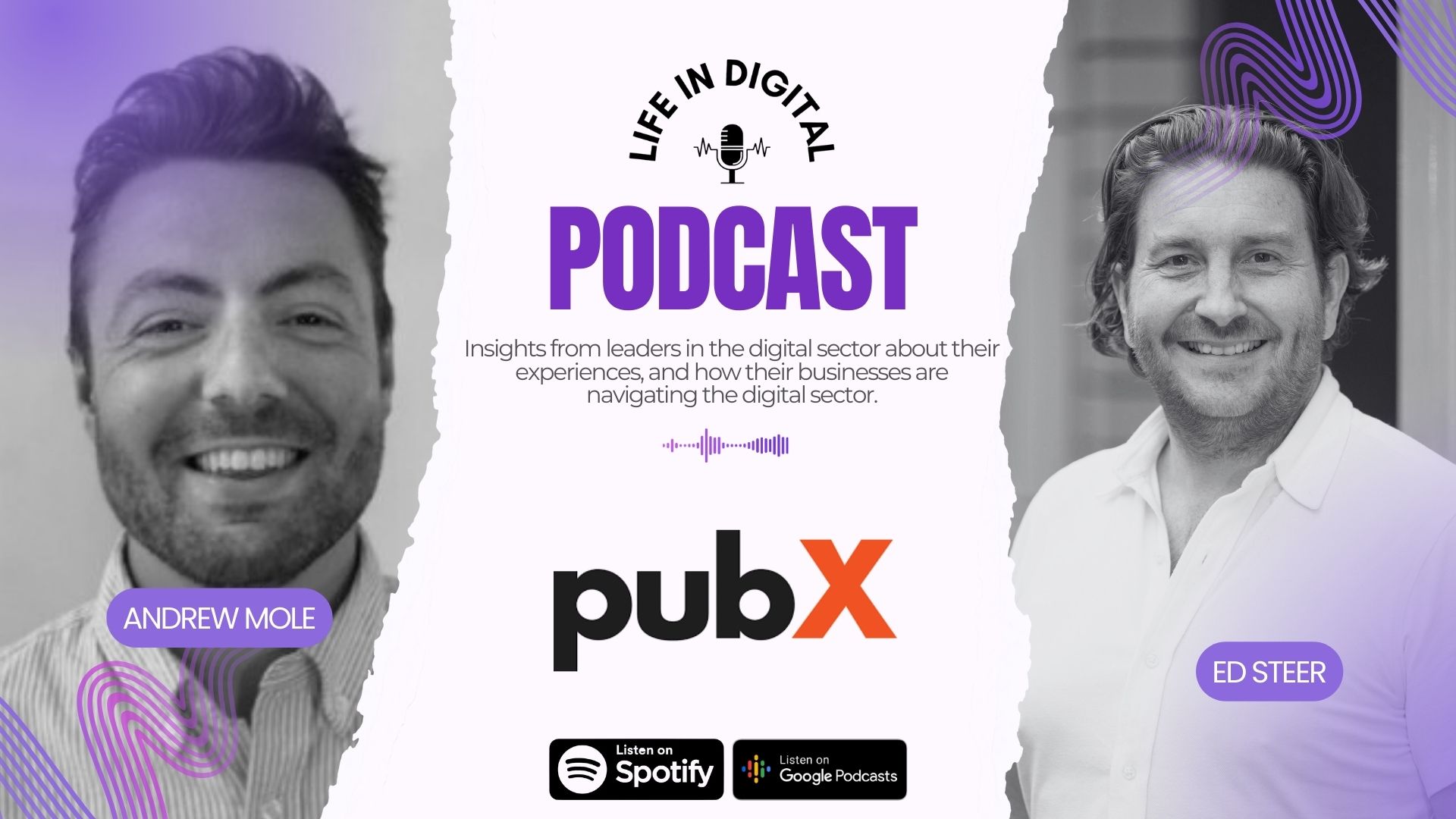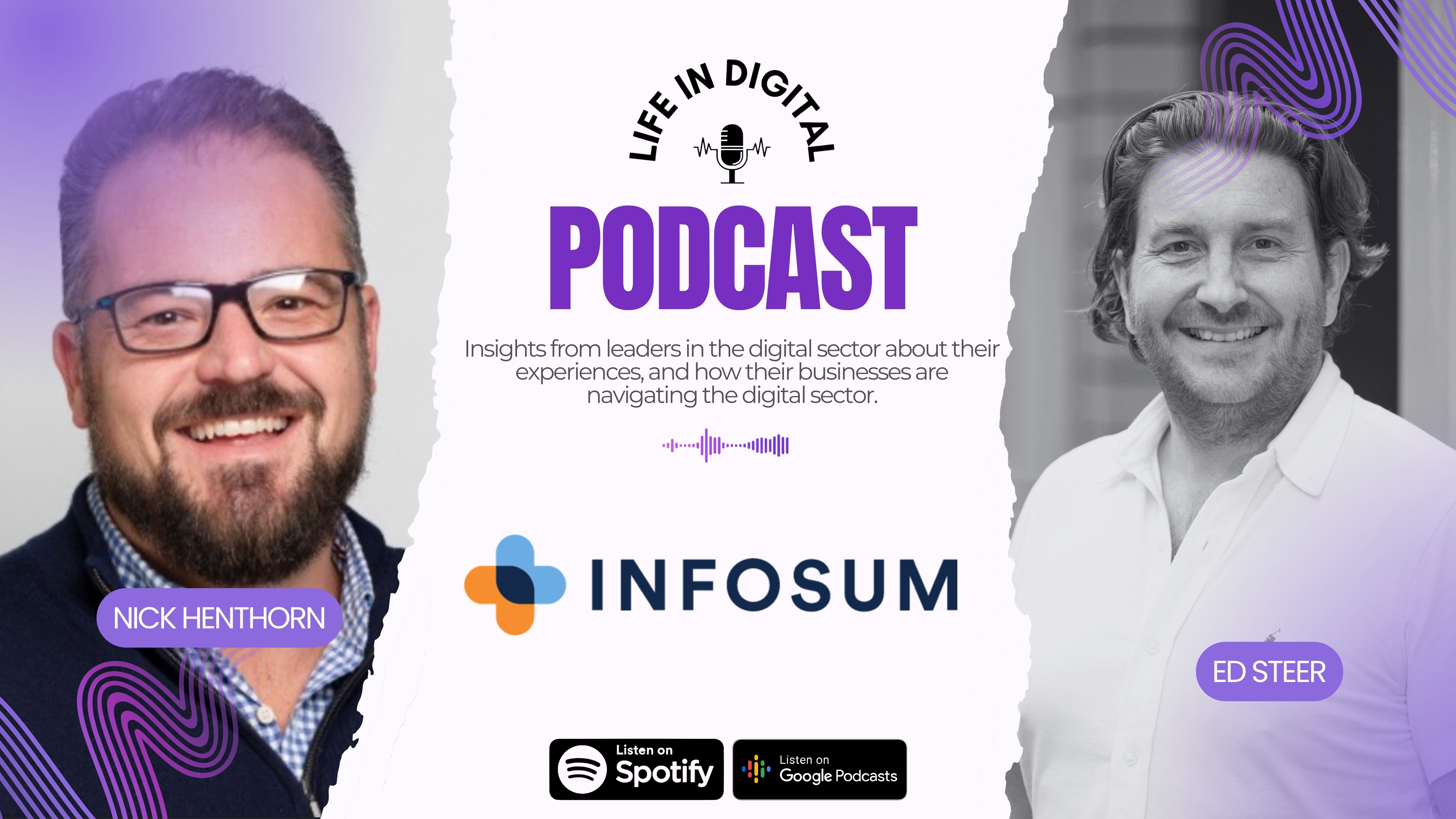Blockchain: Creating Security & Transparency with Justin Wenczka, CRO at Verasity
15 November, 2021Blockchain: tackling fraud, advancing industry
Out of some $400 Billion of online ads, as many as 40% or approximately $160 Billion worth are seen by bots and not humans. That’s $160 billion of wasted advertising spend by brands!
Our latest guest on this week’s episode of the Life in Digital Podcast is Justin Wenczka, CRO at Verasity. Verasity has a US patent to its Proof of View technology that detects and eliminates ad fraud and only records, on the blockchain, genuine human views of ads and video content.
Ed and Justin delve into how blockchain technology combined with an invalid traffic identification technology can help publishers and advertisers in gaining security and transparency with the ads they create, ensuring that they are reaching a legitimate audience.
With a predicted value of $2,976.7 million, Justin shares how blockchain technology is advancing the Esports industry by providing transparency between all parties.
Verasity’s mission is to significantly increase engagement and advertising revenues for video publishers on any video platform.
How blockchain technology works in an ad tech transaction
Justin summaries the Blockchain journey in 4 steps:
- A transaction takes place
- The details of said transaction are recorded and verified
- The data is stored as a dedicated block once confirmed
- The created block is given a unique identifier before it is added to the chain where it cannot be altered.
Some of the biggest challenges faced by financial services are data integrity, fraud and tech integration which could all be addressed using blockchain technology.
Justin say’s blockchain allows there to be “an unparallel transparency when looking at transactional information”.
It typically takes several days for a bank to process a transaction and for that money to be available. By using Blockchain technology, through a controlled network, new blocks could be added to a pre-existing chain including all data related to the transaction. This transaction could happen instantaneously with no need to wait for central processing. Blockchain technology also allows institutions to exchange funds further broadening the uses of this technology.
Verasity on bridging the gap between block chain and Esports
Esports, a term used to describe competitive human-vs-human video gaming, is one of the many industries which has seen drastic changes since the introduction of Blockchain technology.
In 2018, Esports was valued at $915.3 million and is expected to grow to $2,976.7 million by 2026.
Justin explains why Esports and blockchain technology fit together so well as he says ‘they both have similar demographics” from his personal perspective he believes that the overlap is welcome due to the types of interactions the users experience”
Blockchain technology could bring stakeholders together and allows them to connect through a decentralised platform allowing the management of the distribution of prizes, player transfers, sponsorship, advertising etc.
This in turn has also introduced transparency on behalf of the players who dedicate energy and resources to an activity which they can completely trust. Transparency in smart contracts eliminates the concern around prize money and how it may be distributed unfairly.
Due to the rapid rise of the Esports industry, many feel as though they have been left out to compete as they are not at the highest level of play. This has allowed developers to create decentralised apps with Ethereum, EOS, Link and NEO in order to lower the level of entry for those who wish to compete at a lower level.
How Blockchain is tackling fraud in the Ad Tech industry
Fraud is also another major factor which impacts many industries massively. It is estimated that in 2018, the digital advertising ecosystem which includes many telecoms, media and technology firms lost approximately $19 billion to fraud.
Blockchain could solve the many trust related issues within the advertising industry. It could enable real-time, trusted data, while consumers would be provided with more relevant ads as well as stronger privacy rights.
Justin explains how “Verasity are combining blockchain technology to advanced invalid traffic identification” so they can identify the legitimacy from both ends being the advertisers and the consumers.
Due to the immutable data, only individuals who have permission and who have participated can access verified, tamper-proof records available through individual, customised dashboards.
The data flows and transactions are mostly automated ensuring speed, can be transparent where needed and hidden by cryptography where it does not need to be hidden and highly trustworthy for every participant including the consumer.
To find out more about Verasity’s mission is to significantly increase engagement and advertising revenues for video publishers on any video platform, please visit their website.
We have only covered snippets of the content that came out of Justin and Ed’s discussion on our latest episode of the Life in Digital Podcast. To listen to the episode in full, listen here.




